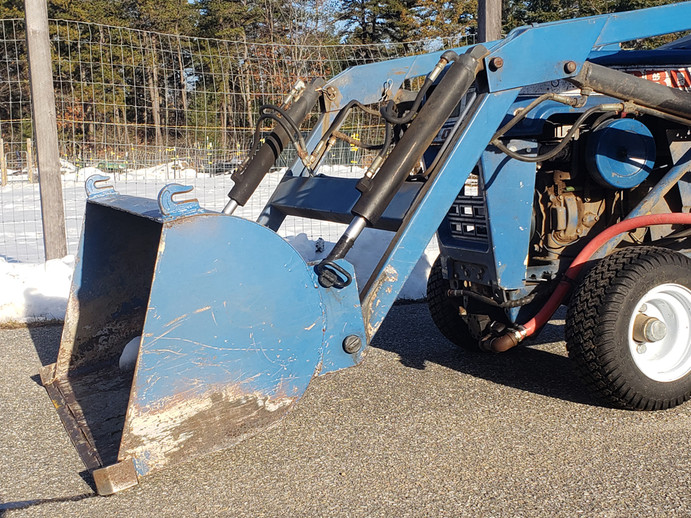Set Up and Operating Your Front End Loader for Vintage Garden Tractor
In the previous article, “ Best Vintage Garden Tractor for a Front End Loader,” I wrote about what characteristics to look for in a garden tractor for a front end loader. In this article, I will explain how you should set up your machine once you have a front end loader mounted.
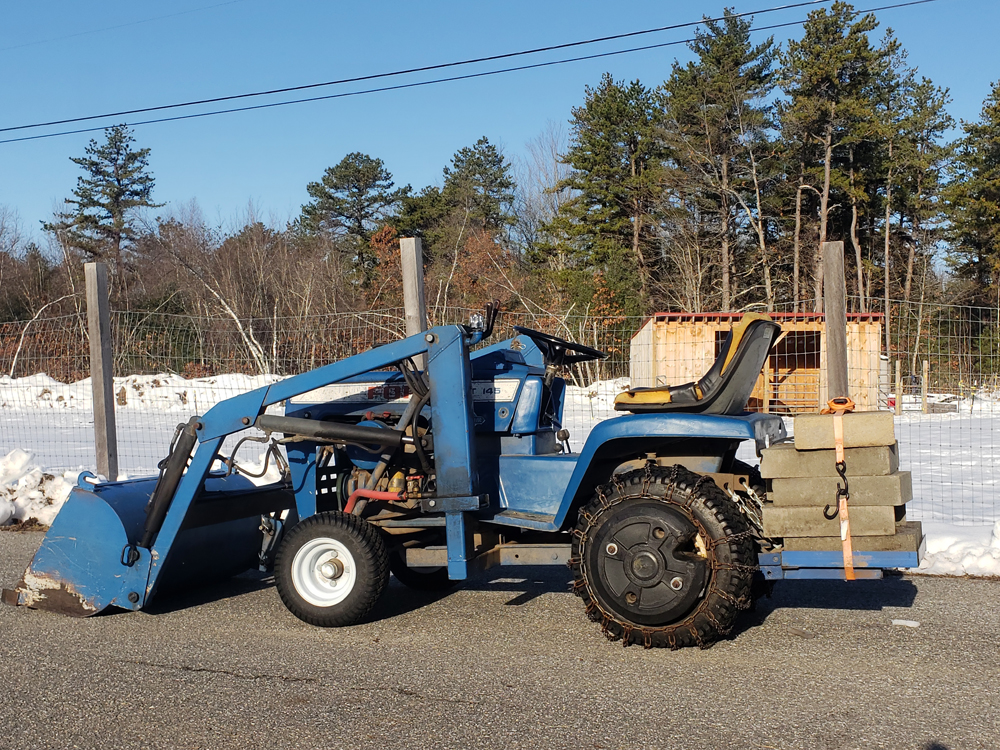
Caption: The most used machine on our farm property. This tractor sees daily action all year round.
To get the most out of your garden tractor front end loader you will need to consider the following:
- Wheel Ballast
- Rear Counter Ballast
- Hydraulic Relief
- Tire Tread
- Steering Technique
- Loader Technique
Wheel Ballast
Vintage garden tractors are powerful machines. After you have mounted a front end loader you have a powerful and versatile tool at your disposal. In order to utilize the most power you need to increase your tractor’s traction. The best way to do this is to add weight directly to the rear tires. You can do this by adding external wheel weights, filling the tires with a liquid ballast, or both.
External wheel weights have been available in Cast Iron, as well as Concrete filled plastic wheel weights. They come in 50# and 75# versions. You can also fabricate a special mount to use olympic gym free weights.
Liquid ballast can be added to the inside of your tires using a small electric pump, 5 Gallon Bucket and a special valve stem tool that connects a water hose to your valve stem. Common liquids to act as ballast are: water, calcium chloride, RV antifreeze, and specialty fluids such as rim guard.
- Water is the easiest and most readily available liquid. However it freezes in cold climates.
- Calcium Chloride is the most dense liquid ballast and therefore can add the most weight. A drawback to using this is if air contacts the inside of the wheel through a leak in the tire, rust will form and over time will destroy your wheel.
- RV Antifreeze is what I prefer to use. It adds the same weight as water, will not freeze, and will not damage your wheels.
- Specialty Fluids such as Rim Guard are available through tractor dealers. These fluids don’t freeze, and are dense enough to add significant weight to your wheel. The drawback to using this is the cost and availability.
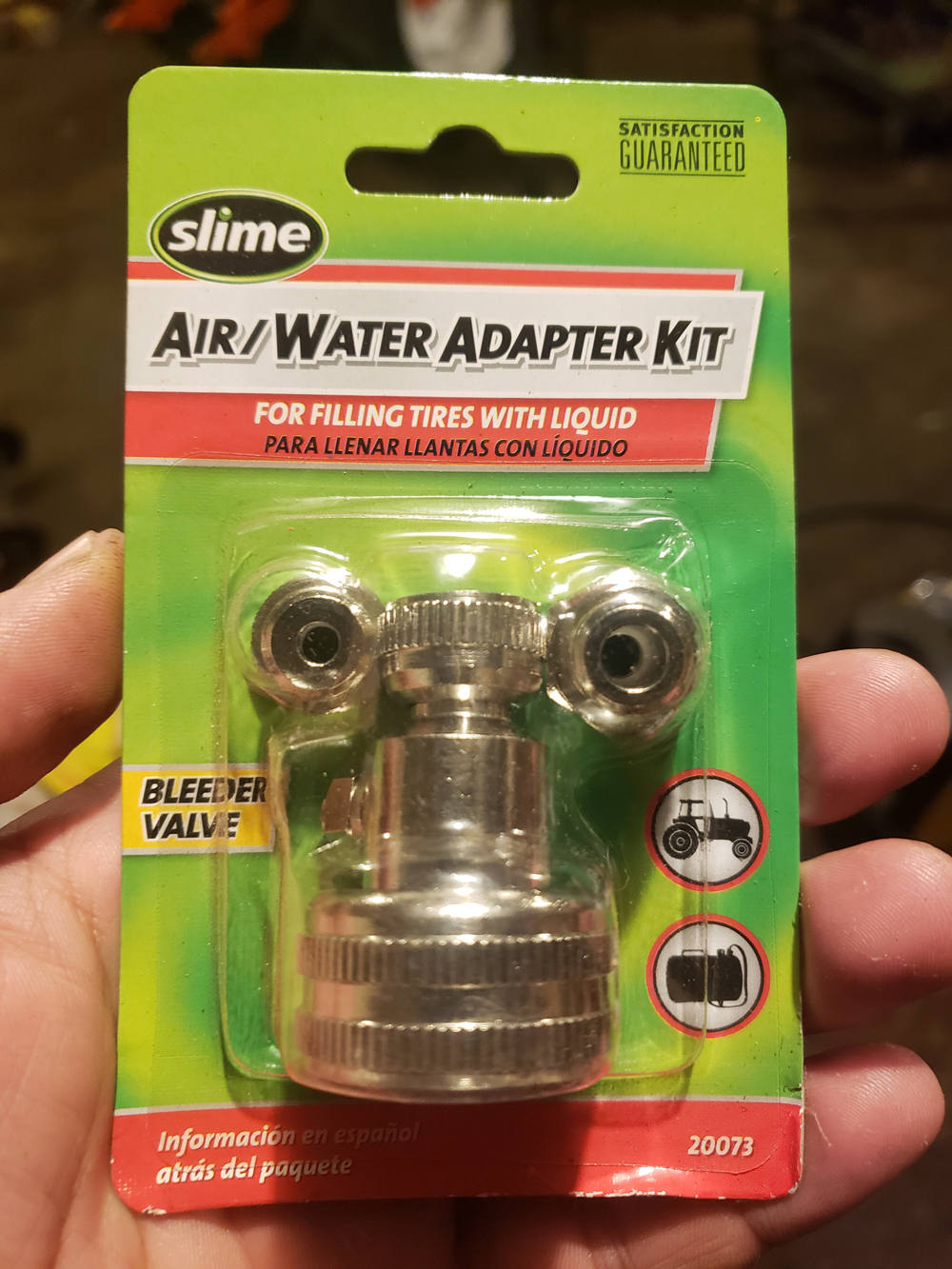
Caption: Tire valve stem tool for adding liquid ballast.
Rear Counter Ballast
To get the most lift out of your front end loader, you need to balance the weight of the tractor. You should put additional weight behind your rear axle and it should be equal to at least half of your load in the front end loader. However the more weight the better while remaining below your rear axle capacity. You can also extend the weight further from the axle to apply a mechanical advantage to the weight. This weight will help reduce the load on the front end of your tractor and make steering and maneuvering more manageable with a loaded bucket. I personally have 330 pounds on the rear of my primary tractor loader.
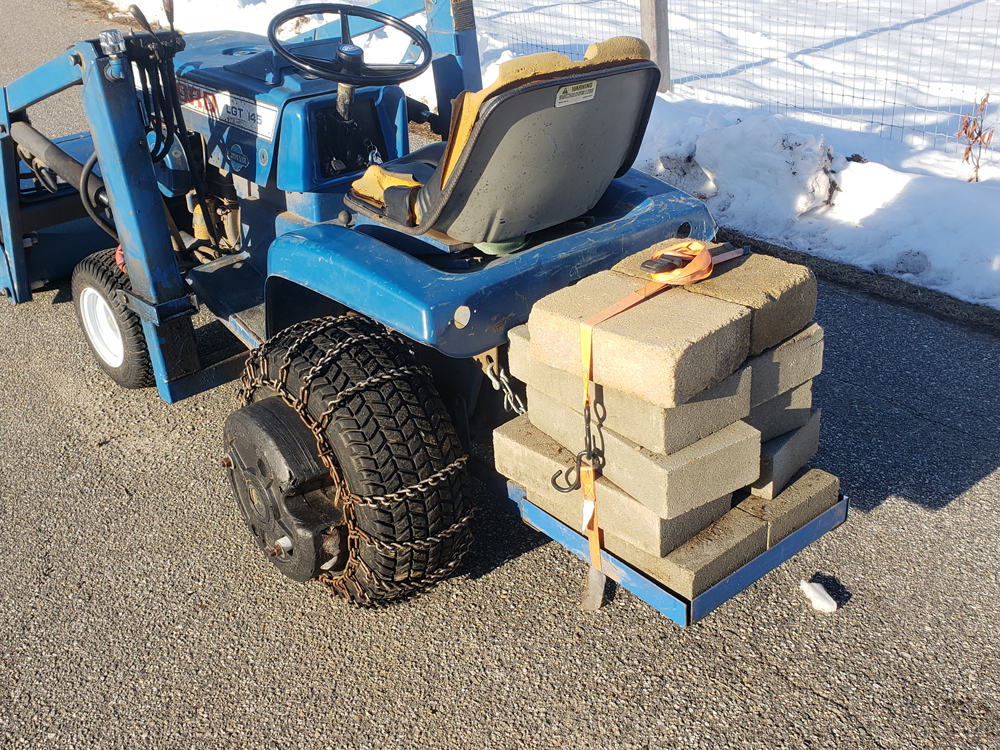
Caption: This Ford LGT 145 has 330 pounds of counter ballast weight, 150 pounds of wheel weights, and the tires are filled with calcium chloride adding about 84 pounds per tire. Chains are only on for winter use.
Hydraulic Relief
The control valve on your front end loader has an adjustable pressure relief. This relief will dictate the maximum amount of weight you can lift with your front end loader. You should adjust your relief so you are never able to lift more than your tractor can handle. With that said, a properly equipped garden tractor can handle a substantial amount of weight in the front bucket. The maximum weight depends on many factors including any upgrades you make to your tractor. My machines are set up so I can comfortably load 500 pounds of material and still drive around.
Tire Tread
Your garden tractor loader can drive into piles of material, dig into the ground, push out small stumps and much more. Tire tread and wheel slippage comes into play when performing these tasks. Agricultural lug tires are a common choice for front end loaders but may not always be the best choice. Ag tires can provide great traction in many conditions but in some conditions they can dig your tractor into a hole very quickly and get you stuck. Less aggressive tires with a wide tread like turf tires or multi-terrain tires can provide lots of traction however when the wheels spin they won’t dig you deep into a hole.
Steering Technique
Regardless if your tractor has power or mechanical steering, you should always try to turn while you’re in motion and let the front tire tread aid in steering. For tractors with power steering, it will help prevent damage to your tie rods, and for mechanical steering, it may be the only way you can steer the tractor. Some tire treads such as tri-rib tires in the front can also help with steering.
Loader Technique
Remember to use your garden tractor loader with caution. Most garden tractors do not come equipped with rollover protection structures so good sense and an acute awareness of your surroundings are important. When transporting material in your bucket, carry the loader bucket low to the ground and avoid uneven terrain and drive slowly.
When getting material from a pile, it is best to approach the pile and lift your loader up and scrape down loose material, then bring your bucket back down to take a scoop.
When back-dragging an area, only curl your bucket forward enough to let your cutting edge contact the ground so most of the hydraulic ram is still inside the cylinder. This prevents bending and damaging the hydraulic rams.

Caption: The correct bucket position for back-dragging. Back-dragging is appropriate when leveling loose material on the ground.
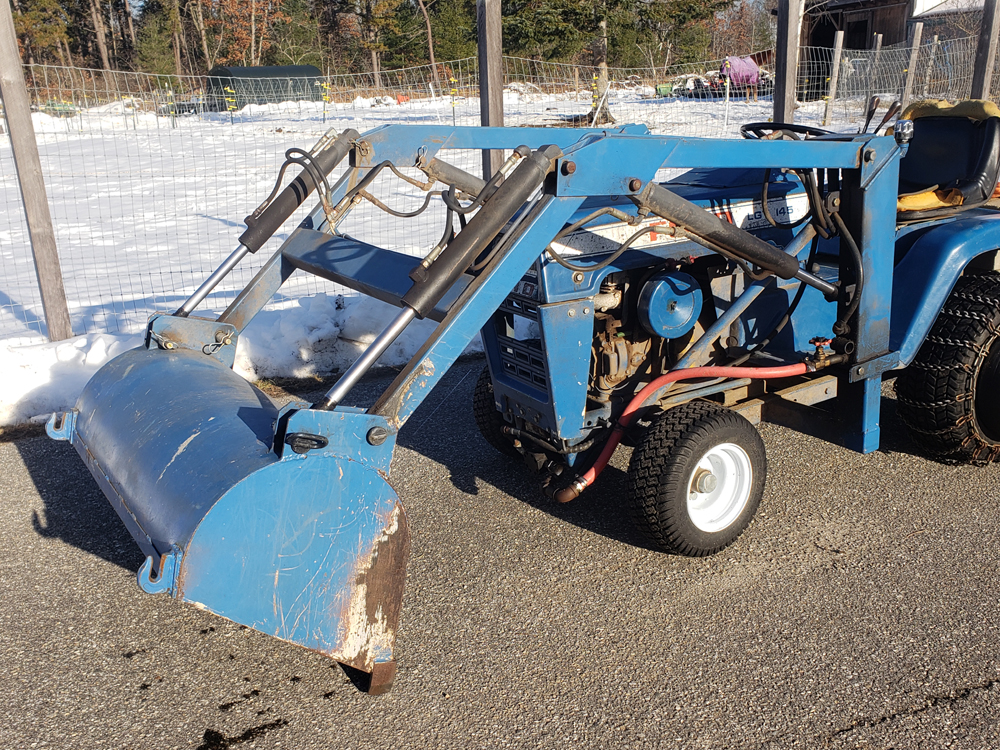
Caption: Incorrect bucket position for back-dragging. If the cutting edge hits something solid it could bend the curl hydraulic cylinder rams.
In conclusion, garden tractors make fantastic small platforms for front end loaders. With this information I hope you are able to maximize your garden tractor’s potential and enjoy many years with your small but mighty machine.
Thank you for saving the Tractors!
- Norman
Recent Posts
-
A Letter From the Owner of iSaveTractors
Dear Friends and Fellow Tractor Enthusiasts, After over a decade of serving the vintage small engine …Jun 5th 2025 -
Rebuild your Old Kohler K Series Engine vs Buying New
Why Rebuilding Your Old Kohler K-Series Engine Beats Buying a New Mower or Engine In today’s t …May 13th 2025 -
iSaveTractors vs Cheap Parts from Amazon
Why iSaveTractors Parts Outshine the Cheap Alternatives on Amazon When it comes to restoring and mai …May 12th 2025

